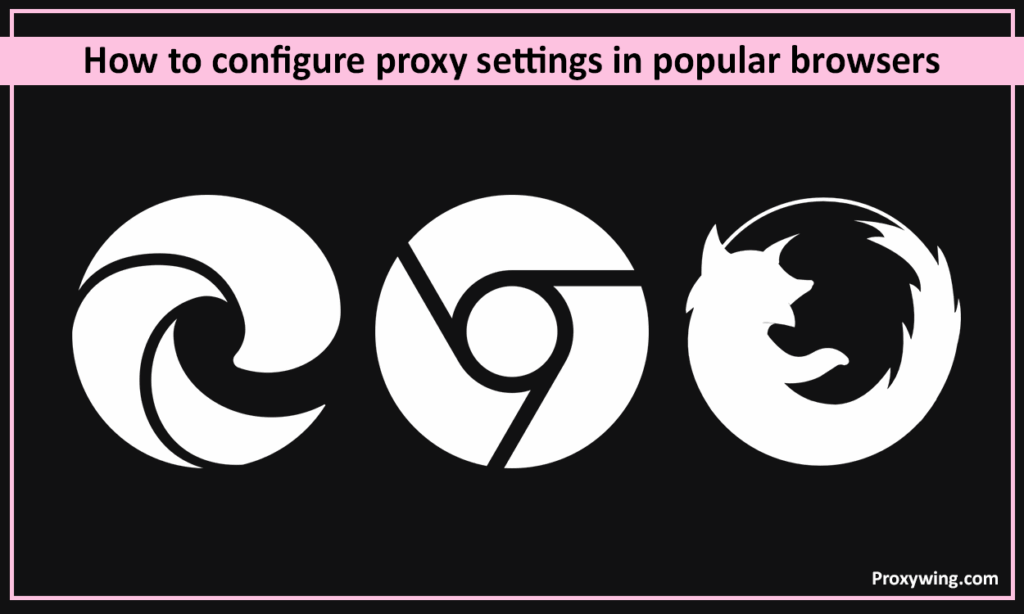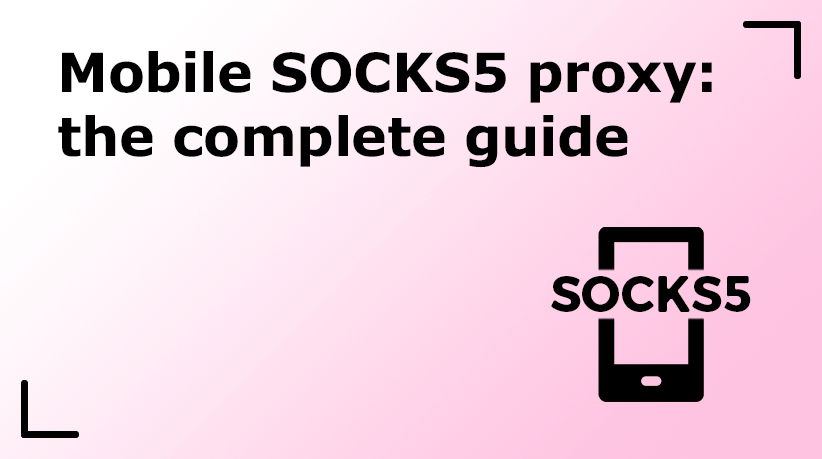How to Correctly Configure the Proxy Server Settings for Your Network
If you are looking to safeguard your privacy when online, gain access to geo-restricted content, or just browse the web more safely, a proxy server can be a handy tool. Proxy servers have long been used on the internet, especially in the enterprise space, but now they are also being used by individuals as well. If you’re keen to learn more about the proxy setup process, this article is for you.
Published:
02.05.2025
Reading time:
9 min
In this comprehensive tutorial, we will walk you through the general concept of what a proxy server is, and offer step-by-step guides on how to configure proxy servers on a number of different operating and web browsers. Finally, we will provide steps on testing its functionality and troubleshooting any problems you might run into in the process. Let’s kick things off with the basics.
Article’s Key Takeways
- Configuring proxy settings is straightforward across operating systems like Windows, macOS, Android, and iOS, as well as in popular browsers such as Chrome, Firefox, and Edge.
- Correct setup requires entering the right server IP or URL, port numbers, and authentication details if needed, after which you can test functionality by checking your IP or accessing region-locked sites.
- Proxies serve a wide range of uses: privacy, ad verification, social media management, and web scraping among them, but proper configuration and troubleshooting are essential for smooth performance. Following the right steps from this article ensures that proxies deliver on both personal and business needs without unnecessary connection issues.
What Is a Proxy Server and Why Use One?

A proxy server acts as a go-between, or intermediary, between your personal device and the different internet resources you would like to access. When you choose to use proxies, your internet traffic doesn’t directly go where it’s meant to; instead, it goes through the proxy infrastructure first.
After the proxy server configuration step, the server then takes on the task of forwarding your web traffic to the specific website or application that you’re making requests to access. That means the websites and other online services you access will not view your device IP address, but instead the IP of the proxy servers. This creates several benefits as discussed in the next section.
Why do we need a proxy server?

- Privacy and Security: Using proxy servers hides your IP address so that your online sessions are private and your internet connections are secure from any snooping, addressing any of your privacy concerns.
- View region-restricted content or websites: Using proxies allows users to access websites and other internet services that are restricted in their region. We offer different types of proxies, including residential proxy solutions with IPs from local devices in several regions.
- Performance enhancement: Using proxies can speed up browsing using caching if you configure them right. Proxies also have much better browsing performance than other privacy solutions like VPNs.
- Filter or screen internet use: Businesses and schools can use proxy servers to determine what websites their users can access and those they should not.
- Ad verification: Businesses running ads in specific countries can use proxy servers to view how their ads appear to their target users.
- Social media marketing: Digital marketers can use proxy servers to manage social media accounts targeting users in a specific country. Using proxies allows them to view feeds and trending topics just like the locals.
- Webs scraping: Using a proxy setup enables businesses and researchers to scrape data from websites without being detected or blocked. Most providers of proxies offer the IP pools feature allowing users to use multiple IP addresses and port numbers, which makes it seem like their network connections are coming from several devices.
How to Set Up Proxy Server Settings on Different Devices

Follow these steps to set up proxy settings on some of the popular operating systems for desktop and mobile devices.
Windows
- Go to Settings > Network & Internet > and then select Proxy
- Select Manual proxy setup and turn on the “Use a proxy server” option to On. If a user selects the manual option, it allows them to input the proxy server details of their choice.
- Type in the IP address and port number of the proxy. You will obtain these details after purchasing your proxy subscription. Remember the server has different ports that also have different numbers, make sure to use the right one.
- Click Save. After inputting these details, the proxy server will automatically configure your web requests to use its IP address.
- To disable the feature, you simply toggle it to the Off state.
macOS
- Navigate to the System Settings or System Preferences menu (depending on your macOS version), then select the option named Network.
- Select your active network (Wi-Fi or Ethernet) and click on Details. Any of the networks that you select must be active and in use on your device.
- Navigate to and tap on the Proxies tab.
- Select the type of proxy you’d like to utilize. The available options include HTTP, HTTPS, SOCKS, etc. HTTPS proxies are the best option for HTTPS traffic
- Enter your proxy server URL and port. These details are provided after purchasing your proxy subscription. The server URL is the equivalent to IP address as we saw earlier with the Windows setup. So, if you enter the server URL, then entering the IP is not necessary.
- Click OK, then Apply
Android (Manual Configuration Process)
- Navigate to Settings > Network & Internet > Wi-Fi
- Locate and click on the Wi-Fi network you are using.
- Tap the pencil/edit icon > Advanced Option
- Configure the Proxy Settings to use Manual Mode
- Enter the proxy hostname and port. These details are provided by ProxyWing at the time of purchase
- Save your changes
iOS
- Go to Settings > Wi-Fi
- Tap the “i” icon next to your connected network
- Scroll down to HTTP Proxy, select Manual. It is usually in the “Off” state by default
- Fill in the necessary server information (URL or IP address) along with the corresponding port information. These details are provided after subscripting to any of our proxy solutions
- Type authentication (username & password) if required
Please Note: All the above proxy server configuration steps are manual and not automatic configurations.
How to Configure Proxy Settings in Popular Browsers

Follow these steps to configure proxy settings for these popular browsers.
Google Chrome
By default, Chrome takes proxy settings from your computer. To modify:
- Navigate to the Settings menu, then go to the System option, and then open your computer’s proxy settings.
- Follow steps for Windows, macOS, Android, or iOS depending on your device
Mozilla Firefox
To set up proxy settings on Firefox, follow these steps:
- Go to Settings > General
- Scroll down to Network Settings and click on Setting
- Select Manual proxy settings
- Enter your proxy details, including the port and IP address of the proxy server
- Click OK
Microsoft Edge
As with Chrome, Edge also utilizes the system’s proxy settings:
- Launch Edge and go to Settings > System and performance
- Click Open your computer’s proxy settings
- OS-specific instructions (Windows/macOS). Follow the steps for Windows or macOS that we shared earlier.
How to Test if Your Proxy Server Is Working

After you have configured the proxy settings on your device, here are several ways to test whether they are working as expected.
- Open your browser and go to our free tool to obtain IP address information. These tools will show your IP address and the location. Make sure it shows the IP address and location of the proxy server you chose.
- Use other online resources like proxy-checker to check your proxies, insert the data that you received after purchase from the proxy and click “check”
- Try accessing a geo-blocked site to check if you can. For instance, if there is a TV show restricted in your region, try to access it after configuring your proxy settings to a location that is supported.
- If you are using the Firefox browser, carry out a test toggling between “No Proxy” mode and “Manual Proxy” mode to observe if there is a performance and functional difference.
Troubleshooting Proxy Connection Issues

If a user enters the right server details, the proxy server should work fine. But If it’s not working:
- Verify your port and IP settings again to ensure they are correct. Make sure you have changed these details from the available ones that might have been added from a previous setup.
- Verify that the proxy server is running, available without issues. Slow connections can also be due to server issues.
- If the set up process needs a username/password, make sure they’re correct
- Reboot your browser or device after installation
- Disable the proxy to see if it’s the source of the problems like slow connection speeds.
- Reach out to the ProxyWing support team if the issues persist.
Conclusion
In summary, the setup process for proxies is fairly straightforward, at least once you know where to look for information and resources that you need. The proxy server configuration process does not need downloading or installing any configuration files. All you need is the server details like the port number and IP address or URL.
Whether you’re utilizing proxies for enhancing your privacy, watching region-blocked content, or for business use, ensuring you do effective configurations is crucial for everything to work as expected. Make sure to follow the right proxy server setup steps depending on the operating system or browser you are using. Our support team is always available if you need help.
In This Article
Ready to get started?
Related posts


